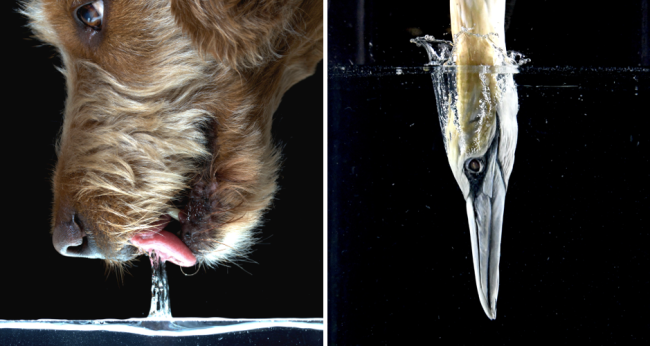Drinking and Diving
Events | Mechanical Engineering
Drinking and Diving
November 4, 2019 7:30 AM

Speaker
Sunghwan Jung
Location
Elings 1605
Type
Seminar
Abstract: Fluids are vital to all life forms, and organisms presumably adapted their behaviors or features in response to mechanical forces to achieve better performance. In this talk, I will discuss two biological problems in which animals exploit mechanics principles. First, we investigated how animals transport water into the mouth using an inertia-driven (lapping) mechanism. Dogs accelerate the tongue upward (up to 4 g) to create a larger water column while drinking, whereas cats use a tongue motion with relatively small acceleration. We found that, in order to maximize the water intake per lap, both cats and dogs close the jaw at the column beak-up time governed by either unsteady or steady inertia. In the context of animal drinking, I will also talk about how bats drink water on the wing from a mechanics point-of-view. Second, we studied how birds with long slender necks plunge-dive and survive from the impact. Physical experiments of an elastic beam as a model for the neck attached to a skull-like cone revealed the limits for the stability of the neck during plunge-dive. We found that the small angle of the bird’s beak and the strong muscles in the neck predominantly reduce the likelihood of injury during high-speed plunge-dive. In addition, elastic feathers can spread the force acting on the body.
Bio: Dr. Sunghwan (Sunny) Jung is an associate professor in the Department of Biological and Environmental Engineering at Cornell University. He received his PhD in Physics at the University of Texas at Austin and then was a postdoc at the Courant Institute at NYU & a math instructor at MIT. Prior to Cornell, he was an assistant and associate professor at Virginia Tech. His research interest is a variety of mechanics problems occurring in natural biological systems; how animals drink, how animals dive into water, and how plants respond to various abiotic stresses.